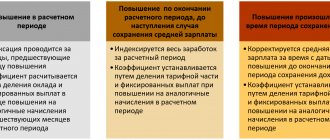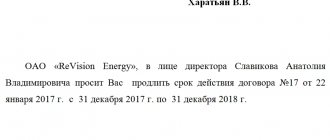Labour Inspectorate
Sometimes it is not possible to pay off the debt this way. In this case, you can continue the fight for your rights by contacting the Labor Inspectorate. This institution is seen as a protector of employee rights.
After the complaint, an investigation will be carried out. In accordance with its results, the Labor Inspectorate will take action. It can not only forcefully collect the amount of debt owed to employees, but also impose penalties on officials and the enterprise. An audit of the company's activities may be initiated. After the appeal has been made, the institution is given 30 days to sort it out and take action.
Completing the application is not difficult. It is written to the boss in free form. The document must detail the circumstances of the case. Your requirements must be justified with relevant documents.
Prosecutor's office
If, from the employee’s point of view, the Labor Inspectorate has not helped, you can contact the Prosecutor’s Office. However, it will conduct an investigation only if it sees elements of a crime. Otherwise, the papers will be sent to the Labor Inspectorate for consideration.
It is allowed to apply to both of these authorities at the same time. However, these authorities will not consider cases where the amount of payments not received by the employee is not agreed with management. In such a situation, it will be effective if the employee files a lawsuit.
When the salary was calculated in the accounting department, but the payment did not occur. The employee in this situation fills out an application. The court, if it agrees with the plaintiff, will grant a court order for the payment of money. This document is handed over to the plaintiff. The manager is given 10 days during which to comply with this order.
Claim structure
Any such document must comply with the requirements. Correct structure is one of them.
This document should have three parts:
- introduction;
- main part;
- resolution.
Let's take a closer look at each of them
Introduction
This part should contain the following information:
- Name and address information about the court in which this document is being filed
- Information about the plaintiff: last name, first name and patronymic, as well as address. If the registration address differs from the residential address, then the residential address is indicated in the document.
- Information about the company against which this claim is being filed: organizational and legal form, name, legal and actual addresses, tax identification number and checkpoint
- The amount that the plaintiff demands from the employing company.
Main part
In this section, you need to accurately and briefly describe the situation that arose, the cause of which was this statement of claim.
This part must contain:
- information about labor relations between the parties;
- employee salary;
- the time interval during which the arrears in payment of wages arose;
- information about attempts to resolve the problem out of court;
- information on the calculation of the amount that the plaintiff demands from the defendant.
In addition, the plaintiff has the right to demand compensation for violation of deadlines for payment of funds, as well as compensation for causing moral damage.
Resolution
In this paragraph, the plaintiff must indicate the requirements that he makes to the employer in this document: collection of debt, compensation, other costs (for example, funds spent on lawyer services, etc.). Here you must list the documents attached to the application.
Documents whose copies must be attached:
- orders on hiring and dismissal;
- employment contract;
- certificates about the amount of salary and its components;
- extract from the work book;
- certificate in form 2 personal income tax and others.
Most of these documents must be provided by the former employer upon application from the plaintiff.
The concept of an individual labor dispute
The concept of an individual labor dispute is considered by the Labor Code in Article 138.
In this case, we are talking about the fact that there are disagreements between the employee and the manager related to the scope of implementation of labor legislation.
This concept may include:
- Disagreements in matters of legislation, application of the provisions of the employment contract, collective agreement. In this case, it is necessary that this be addressed to the body responsible for resolving individual labor disputes.
- This includes consideration of disputes that have arisen between the company and a former employee.
- Conflicts that arose during employment fall into this category. For example, situations are considered where a person was wrongfully denied employment.
Such conflicts vary depending on whether they occur with officials or with an organization.
Various procedures may be used:
- A situation where a decision is made in a general manner. In this case, they first turn to the labor dispute commission, then, if a solution is not found, a lawsuit is filed in court.
- In some types of disputes, recourse to court is provided.
- For some types of conflicts, a special procedure for consideration is used. In such situations, the decision is made either by a higher authority or by the court.
The jurisdiction of a particular dispute is established by law. In most cases, appeals are made to the labor dispute commission. It is organized at the enterprise. The commission should include an equal number of representatives of workers and management. Such bodies can operate at the organizational level or be formed in structural divisions. In the latter case, only those issues that are within their jurisdiction can be considered.
The commission is required to have a seal. Material and organizational support must be provided by the company's management.
If there is a need to go to court, the initiator may be an employee, boss or trade union organization.
Consequences of failure to comply with the statute of limitations when filing an application
Even if an employee decides to recover wages through the court after the statute of limitations on the claim has expired, the court does not have the right not to accept his claim. In addition, the court simply must consider this application. And only if the defendant (in this case, the employing company) files a motion that the deadlines for filing a claim have been violated, the court, taking into account good or bad reasons why the deadlines for filing a claim were not met, can issue a verdict.
If the deadlines were not met for unjustifiable reasons, and the defendant claimed that the claim was time-barred, then the court may side with the defendant and refuse to pay the employee.
The following reasons may be considered valid:
- Illness of the citizen filing the claim or loved ones for whom care was needed, if the fact of the illness itself is documented.
- Territorial remoteness of the place of work and the place where the claim was filed - such cases often arise with citizens who work on a rotational basis.
- Legal illiteracy of the plaintiff.
- The plaintiff is on a business trip.
- Situations when the defendant, evading payments, refuses to provide the plaintiff with the documents necessary to file a claim, or changes the legal address or name of the organization.
In addition, if the court receives evidence that the employee received a salary less than the minimum wage, the employer will be forced to compensate the difference in payment to the employee for the entire period of his work.
Limitation period for payment of wages
The law provides that an employee has the right to file a claim for unpaid wages only within a certain period, called the statute of limitations. In different situations, its duration may vary.
In matters related to non-payment of wages, it is 1 year. Time is counted from the moment the violation occurred. If the employee did not immediately learn about the fact of non-payment, then the period begins from the moment he received this information.
This period is established in Article 392 of the Labor Code of the Russian Federation.
When the period is over, it is impossible to go to court on this issue to restore justice. However, an extension of this period is permitted. This can only be done by the court. He will study the situation and, if there are serious reasons, he may decide to extend the period under consideration.
Write-off of wages receivable
In accounting, receivables must be written off after they are recognized as unrealistic for collection (in the manner prescribed by law). The general limitation period is three years. The limitation period may be interrupted. After the break, the limitation period begins again. In this case, the time that elapsed before the break is not counted towards the new limitation period. However, there is a limitation: the limitation period cannot exceed 10 years from the date of violation of the right, even if the period was interrupted. Thus, the institution does not have the right to write off receivables for another two years. Write-off of accounts receivable that are unrealistic for collection is carried out in the following order.
Accounts receivable must be written off separately for each obligation (debtor). The fact of occurrence of receivables must be documented. Determine the amount of overdue accounts receivable based on the results of the inventory and reflect it in the inventory list of settlements with customers, suppliers and other debtors and creditors (f. 0504089). Carry out the inventory by order of the manager.
Based on the inventory list of payments (f. 0504089) and other documents confirming the justification for recognizing the debt as unrealistic for collection (for example, an internal memo), the manager issues an order to write it off. The order, in turn, serves as the basis for writing off receivables from the balance sheet.
Write off the amount of debt to the financial result of the current year.
It should be borne in mind that writing off a debt due to the debtor’s insolvency does not constitute an annulment of the debt. This debt must be reflected in the balance on account 04 “Debt of insolvent debtors” to monitor for five years (another period established by law) the possibility of its collection in the event of a change in the debtor’s property status.
Record the write-off of debt that is unrealistic for collection based on the certificate (f. 0504833) with the following entry:
Debit 0.401.10.273 Credit 0.302.11.660 – an unrecoverable debt was written off.
Simultaneously with writing off the debt from accounting, reflect it on off-balance sheet accounting:
Debit 04 – accounts receivable are recorded on the off-balance sheet account based on a certificate (f. 0504833).
The rationale for this position is given below in the materials of the “GlavAccountant System” version for budgetary, state-owned and autonomous institutions
Recovery after dismissal
A dismissed employee who was not paid upon dismissal has the right to defend his rights. First of all, you need to talk about this with your former boss and try to reach an agreement on the settlement. If this cannot be done, the victim has the right to file a claim in court. If the decision is made in favor of the dismissed employee, he can count on the following payments:
- Full payment of arrears of wages and other payments.
- Article 236 of the Labor Code of the Russian Federation provides that in the event of a later payment of money, the employer is obliged to additionally issue an amount at the rate of 1/300 of the Central Bank rate for each day of delay.
- You can claim compensation for moral damage caused by a delay in payment. The court will determine its amount regardless of the size of the monetary claims. This is provided for in Article 237 of the Labor Code of the Russian Federation.
However, it must be remembered that the time for such an appeal to the court is limited by the statute of limitations, which is equal to one year.
If you miss it, it is permissible to apply for its extension. The court, having considered the situation, may take into account valid reasons for the delay and extend the period. The Plenum of the Supreme Court clarified the situation, giving examples of reasons that can be considered valid for this.
The following may be recognized as such:
- plaintiff's illness;
- caring for a seriously ill relative;
- being on a business trip;
- the presence of an irresistible force preventing the filing of a claim.
You can also file a complaint with the Labor Inspectorate or the prosecutor's office. If they deem it necessary, they will punish the manager, but this does not always lead to him paying off the debt.
The process of calculation upon dismissal has its own peculiarities.
For example, a situation is possible when an employee terminated his employment relationship, but wanted to take the leave entitled to him by law. In this case, all formalities (including payment) must be completed before going on vacation, but the day of termination of the employment relationship will be considered the last day of vacation. The statute of limitations will have to run from this date.
Although the statute of limitations is established by law, the court has the right to refuse a claim on this basis only if the defendant requests it. Therefore, when omitted, usually the plaintiff in the suit does not apply for its extension (when it is omitted), but does this only in response to the specified demand of the defendant.
If it is possible to present written evidence of the former boss’s recognition of his obligations in the matter under consideration, then the period is interrupted and begins to run from that moment. Therefore, one of the ways to extend is to ask the employer to provide a certificate about the amount of debt, which may become the basis for the situation in question. It is important that the date is indicated in the document.
What are the consequences of missing the deadline for collecting wages?
The expiration of the statute of limitations in itself does not prevent the employee from turning to the CCC and the court. Nor does it mean an automatic refusal to satisfy the employee’s demands.
In particular, the CTS can restore the statute of limitations if it considers that it was missed by the employee for valid reasons. The respect of such must be established in each specific case, taking into account all the circumstances. At the same time, the refusal of the CTS to restore the deadline does not in any way affect the possibility of filing a claim in court.
The court is obliged to first begin proceedings in the case and only then consider the issue of limitation periods and the reasons for missing them. The outcome of such a case in court depends on 2 factors:
- the presence of an employer’s statement about missing a deadline;
- reasons for missing the deadline.
In this regard, when going to court, the following options are possible:
- The employer does not declare in the process that the employee missed the deadline for going to court. In this case, the case will be considered on its merits in the usual manner.
- The employer makes a corresponding statement, but the court restores the period at the request of the employee. The case will also be considered by the court.
- The employer indicates that the statute of limitations has expired, but the employee does not ask the court to restore the period or his request is not granted. The claim in such a situation will be denied.
How much compensation can you receive?
A boss who has not paid an employee for wages is obliged not only to repay the debt, but also to pay an additional amount. It is calculated based on the Central Bank rate. At the same time, 1/300 of it, calculated on the amount of debt, is paid for each day. In this case, the date of final settlement is the last day for accrual of penalties.
In addition, recovery of moral damages is allowed. However, to obtain it, you must prove the connection between the problems that have arisen and non-payment, which is usually a difficult task.
Paying out extra money
Although infrequent, accruals of more than what was earned do occur. And in this case the period of 365 days works. There are two options for the development of events: return the amount to the owner or wait one year and, in the absence of a complaint from the employer, forget about this oversight.
The emergence and resolution of labor disputes has become an integral part of the lives of citizens. This includes dishonesty or omissions of the employer and the human factor. However, relying on laws to protect workers, it has become much easier and faster to resolve problems through the courts.








